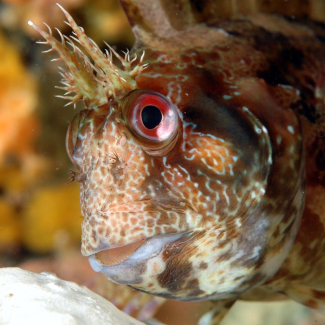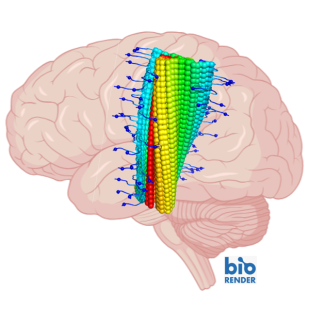
The Arctic Ocean, cradle of viral biodiversity
New results, mainly from data from the Tara Oceans expedition (2009-2013), provide the most comprehensive catalog to date of viruses found in all the world's oceans, including the Arctic Ocean. Led by the Ohio State University in the United States, this study, which involves teams from the CEA, CNRS, EMBL, ENS-PSL, and the Tara Ocean Foundation, associated within the new Tara Oceans Research Federation GO-SEE1 , brings the number of known oceanic viral populations from 16,000 to nearly 200,000. Published as the cover story of Cell magazine dated May 16, 2019 (online April 25), the results reveal the importance of the Arctic Ocean as a reservoir of marine viruses. This work will become a reference for understanding the role of viruses in the responses of the ocean ecosystem to the impacts of climate change.
- 1The Tara Oceans Research Federation, consisting of 22 French and international research teams, has set up the GO-SEE (Global Oceans Systems Ecology & Evolution), under the auspices of the CNRS, CEA, Tara Ocean Foundation, Sorbonne University, PSL, Inserm, ENS Paris, IRD, EPHE, University of Evry-Val-d'Essonne, University Paris-Saclay, UPVD, AMU, University of Toulon, Ecole Centrale de Nantes, University of Nantes, UGA , the EMBL and the Faculty of Physical and Mathematical Sciences of the University of Chile.
Initiated by the Tara Ocean Foundation and its partners, and coordinated by the CNRS, CEA and EMBL, the Tara Oceans expedition collected and carefully analyzed 35,000 samples of marine plankton. Tara Oceans brought together more than 200 scientists from some 20 international laboratories, now united within the Tara Oceans Research Federation.
A new study – published in the journal Cell, on May 16 – by researchers at the Ohio State University – increases the number of known oceanic viral populations from 16,000 to nearly 200,000. Viruses play a role in transporting carbon from the surface to the ocean seabed – the "biological pump". It is therefore essential to identify these viruses and understand their functioning, dynamics and role in the marine ecosystem. This study has made it possible to understand the genetic variation within each population, informing researchers about the evolution and impact of ocean viruses on a global scale, and thereby consolidating our understanding of marine virus populations.

First systematic study of the biodiversity of the Arctic Ocean
Conducted in collaboration with the countries bordering the Arctic Ocean, this study included samples from the circumnavigation conducted in 2013 by the schooner Tara along the edge of the Arctic ice pack, one of the regions most affected by climate change. Researchers identified the viruses by analyzing their DNA. Beyond the Arctic Ocean, data collection involved other oceans, and at depths greater than previous studies2 .
This detailed inventory of viruses is extremely valuable because of their impact on all other marine planktonic organisms (bacteria, archaea, protists, and animals). In fact, viruses can change the structure of bacteria populations by colonizing them, stimulating their metabolism and modifying their evolutionary trajectory, thus influencing globally the ability of the ocean to sequester carbon from the atmosphere.
Micro-organisms in marine plankton play a vital role on Earth: they produce more than half of the oxygen we breathe and absorb carbon dioxide from the atmosphere, transferring it to the bottom of the ocean.
Accessing the genetic variation of viruses to understand their evolution
By developing new methods to sequence the viruses in planktonic populations, researchers have been able to understand genetic variations:
• between individuals within each viral population,
• between populations within each viral community,
• between communities across several environments of the global ocean,
as well as study the driving forces behind all these variations.
The global maps of viral diversity are surprising: First, almost all virus communities are divided into only 5 groups, depending on their location and depth. The great viral diversity measured in the Arctic Ocean is equally astonishing. Most previous studies of uni-cellular and multi-cellular organisms have shown that the highest diversity is in the tropics, and decreases as one moves towards the poles.
These new findings suggest that the Arctic Ocean is a little-known "cradle" of viral biodiversity. They highlight the importance of Arctic regions, strongly impacted by climate change, for global biodiversity3 .

ABOUT THE TARA OCEAN FOUNDATION
The Tara Ocean Foundation, first recognized public interest foundation in France dedicated to the world's oceans, is leading a scientific revolution: The Foundation has developed an open, innovative Ocean science that will enable us to predict, anticipate and better manage tomorrow's climate risks. We use high-level scientific expertise to raise awareness and educate young people, mobilize policy makers at the highest level, and enable emerging and developing countries to access the latest knowledge about the Ocean. A veritable floating laboratory, the research schooner Tara has already traveled more than 375,000 kilometers, making stopovers in more than 60 countries during 4 major expeditions, carried out in collaboration with international laboratories of excellence (CNRS, CEA, PSL, EMBL, MIT , NASA, and others).
- 2Patterns and Ecological Drivers of Ocean Viral Communities. J.R. Brum, J.C. Ignacio-Espinosa, S. Roux et al., Science, May 22, 2015. DOI: 10.1126 / science.1261498
- 3This study was supported by the Gordon and Betty Moore Foundation, the National Science Foundation as well as Oceanomics and France Génomique (“investments for the future”).
Marine DNA macro viral and micro-diversity from pole to pole. Ann C Gregory, Ahmed A Zayed, Nádia Conceição-Neto, Ben Temperton, Ben Bolduc, Adriana Alberti, Mathieu Ardyna, Ksenia Arkhipova, Margaux Carmichael, Corinne Cruaud, Céline Dimier, Guillermo Domínguez-Huerta, Joannie Ferland, Stefanie Kandels-Lewis, Yunxiao Liu, Claudie Marec, Stéphane Pesant, Marc Picheral, Sergey Pisarev, Julie Poulain, Jean-Eric Tremblay, Dean Vik, Tara Oceans coordinators, Marcel Babin, Chris Bowler, Alexander I Culley, Colomban de Vargas, Bas E Dutilh, Daniele Iudicone, Lee Karp-Boss, Simon Roux, Shinichi Sunagawa, Patrick Wincker, & Matthew B Sullivan. Cell Biology. Online April 25th. DOI:https://doi.org/10.1016/j.cell.2019.03.040


